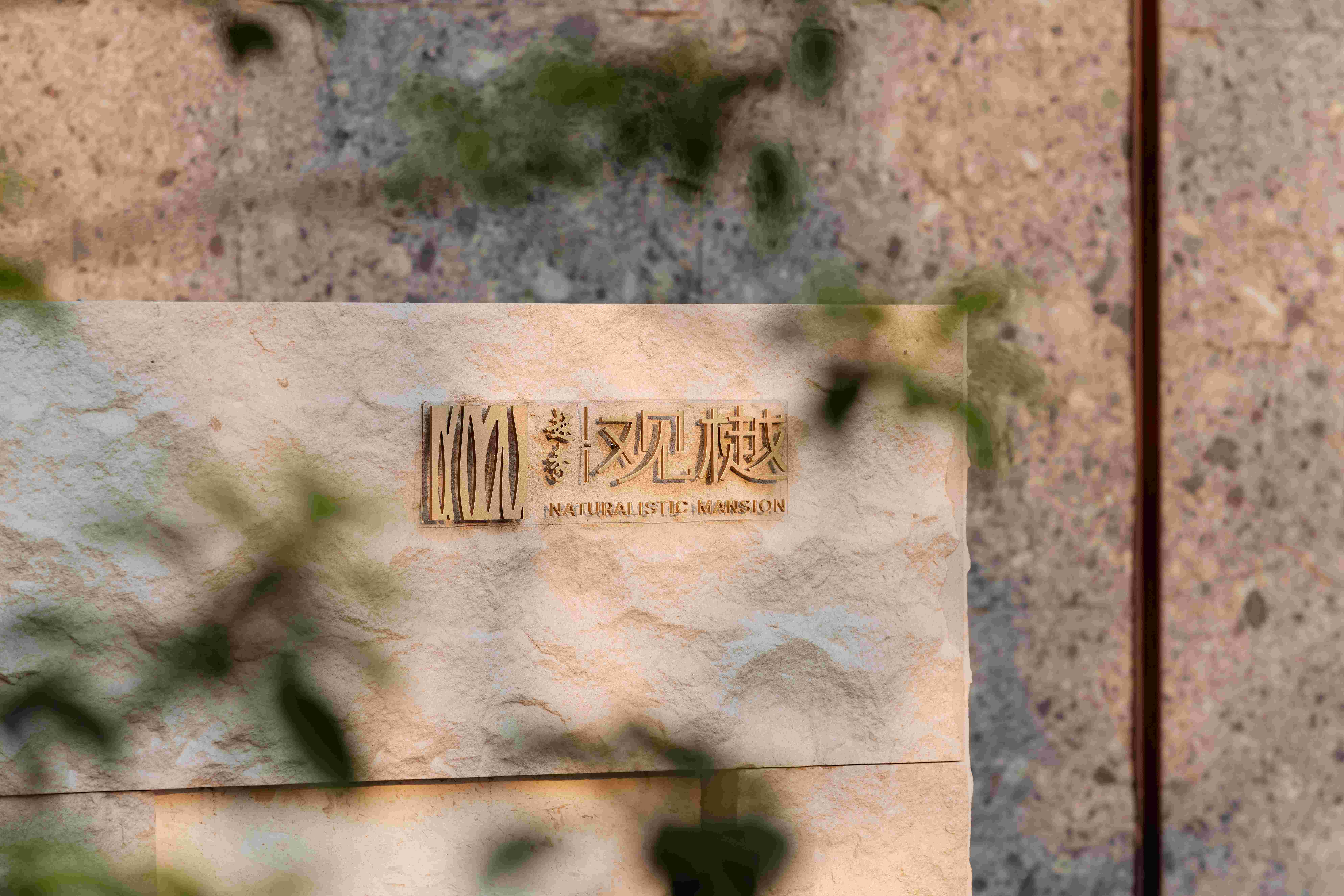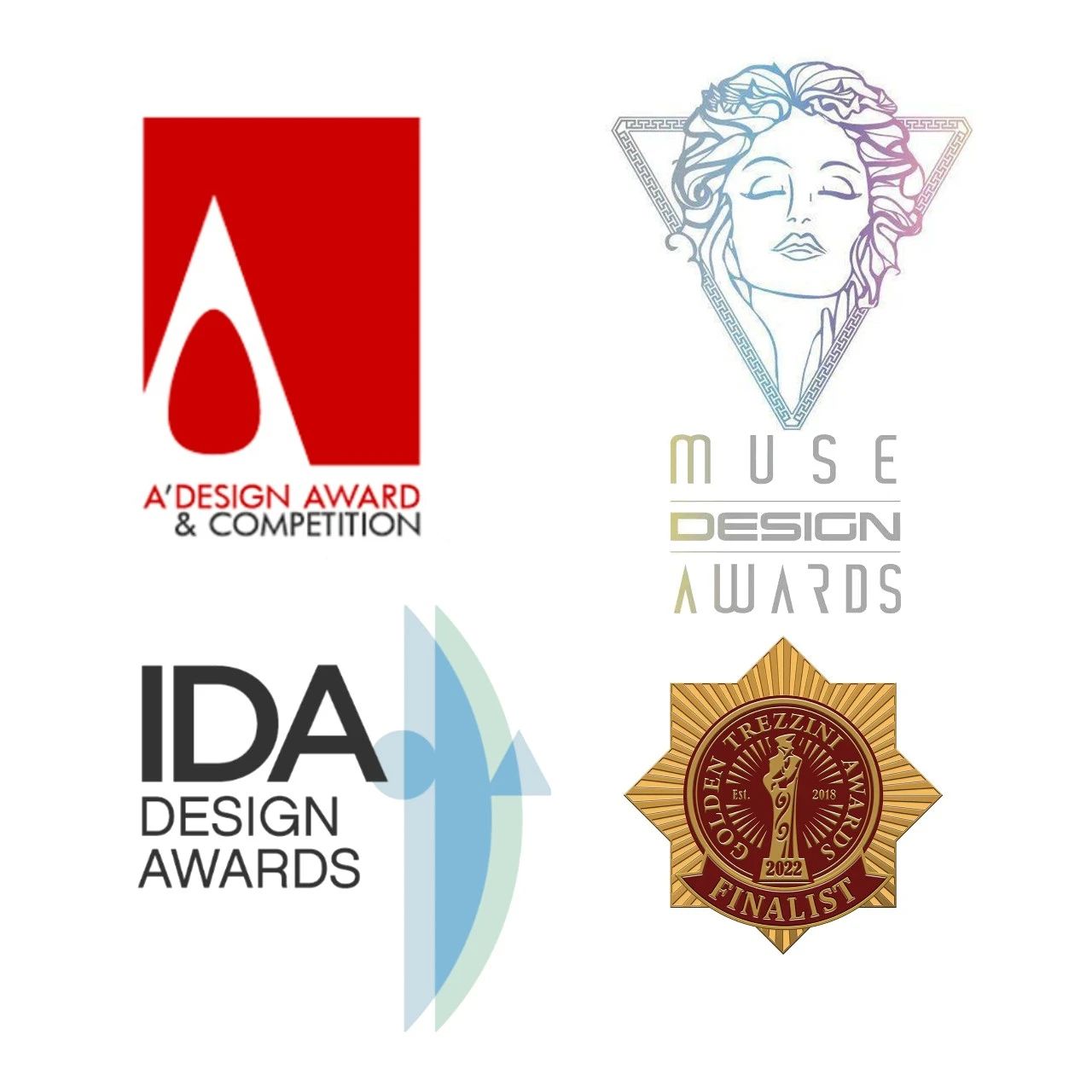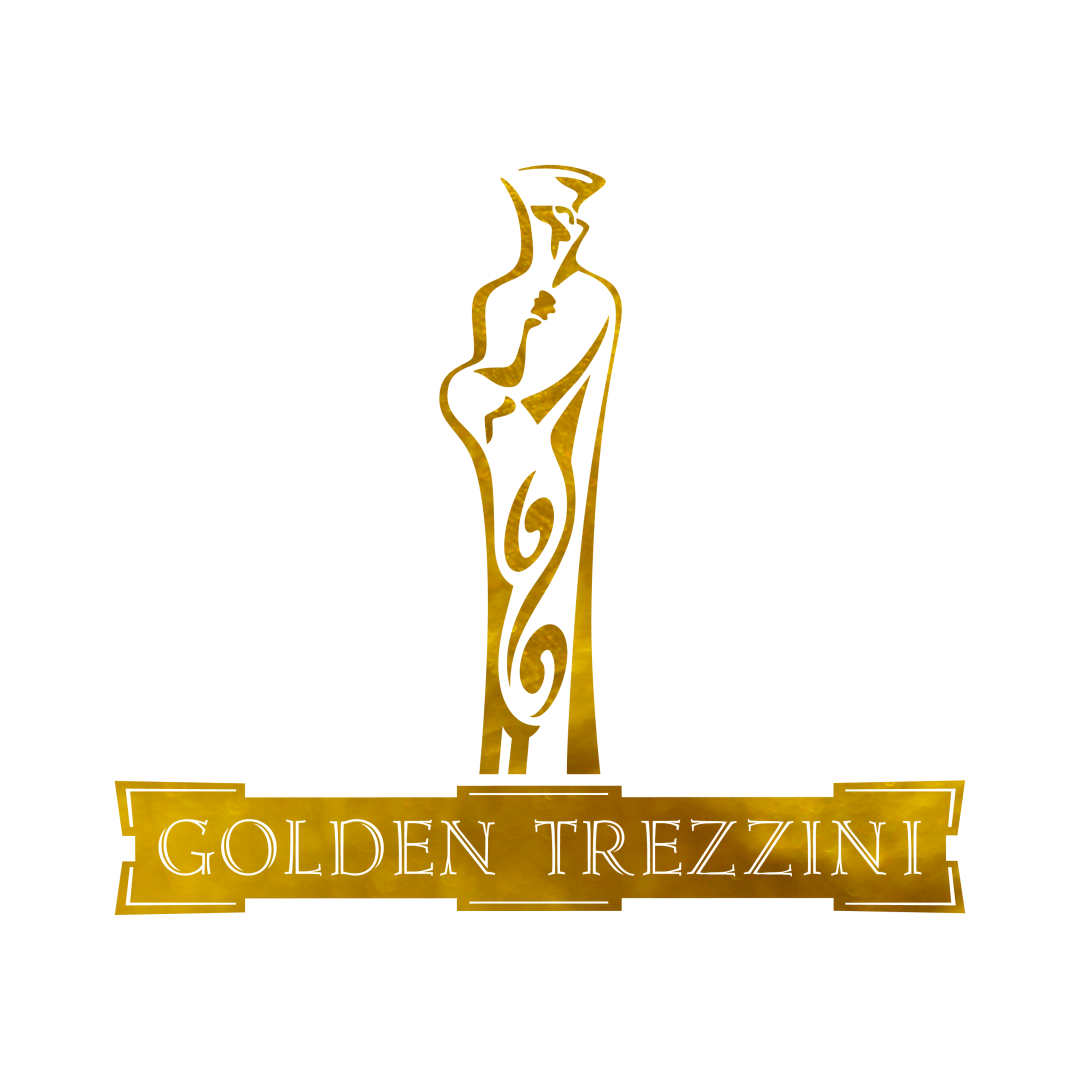【GOGAR】藏在极致东方精工尺度下的空间符号
2024-09-09
【GOGAR】2022年度摘四项国际顶级大奖
2023-01-18
城市生活与空间的魅力_论GOGAR艺术团队城市空间理念2023-11-17
作者:大卫-布鲁贝克(美)
在既关心商业又重视生态的自然氛围里,GOGAR的公共艺术产品在设计上无疑是成功的。但优秀的设计并不仅仅局限于制造一种环境氛围,从而让人们在某种特别心境下享受其中,而能否进一步帮助人们认识和感知自己与自然环境的关系,才是现代设计的真谛。
陈昭Chen Zhao、梁楚琳Carol Liang、吴文迪Wen Wu、王硕鹏Brody Wang带领的GOGAR 高加艺术顾问机构一直秉承“结构抽象主义”的设计理念。他们探索并提炼事物本身的形态、价值以及其在“场”(物理概念)中构建的客观逻辑,去打破并再平衡这些关系。 GOGAR所提供的设计,不仅如同艺术品般深邃,更赋予了公共空间新的生命,让人与人之间的情感距离更加紧密,帮助每个人更加珍视自己在城市中的角色和位置。
GOGAR那些能让我们意识到自己的视觉空间与自然环境是紧密相连的设计,蕴含着深厚的哲学意味。如GOGAR团队的作品《太极I》(2007)《城市之心》(2013)《繁星如梦》(2019)《山云雾》(2019)和《塑月》(2019)都可以作为范例保留在历史文献中。这些作品虽然都是置身于自然中的装置艺术,但它们纷纷展现了空间、纹理和反射的独特效果,使得每个观赏者都能深切感受到真实的物体形态与我们的视觉感知之间是如何相互交融的。这些作品帮助每一位观众认识到,自然不仅仅是一种感觉,而且是一种实际存在的表象,而这种表象是用语言无法完全描述的。
这些旨在让每个人都能深切感受到,自己与周围自然环境的和谐融合是如何做到的呢?以《太极》系列、特别是《太极I》为例,这个作品由石头和不锈钢精心雕刻而成,展现了一个正处于太极练习姿势中的人形。左侧的石头象征了我们能被他人从外部观察到的物质形态;而右侧部分的石面被巧妙地去除,露出了内部的不锈钢面,像面镜子那样反射出了整个周围的自然景象。雕塑作品《太极 III》也传达了将自身内部空间展示与肢体动作空间相结合的理念,该作品左侧为内部中空,右侧为肢体伸展。
这不仅表达了人的每一个外在动作都与内心有着紧密的联系,而且在更深层次上,它揭示了我们每个人都有一个与自然息息相关的内在视角。不锈钢的光滑表面将周边的一切都映照了出来。这个设计巧妙地展现了人的双重身份:一方面,我们是外界可以观察的物质存在;另一方面,我们也是一个内在世界的主宰者,只有我们自己才能真正感知和解读得到这一切。
那么,《太极I》和《城市之心》之间有何联系?这两个设计的核心都是呈现两种不同的空间:一种是外在的、实体的,而另一种是内在的、可视的。与此不同的是,《城市之心》的设计让观者更容易察觉到实体空间与属于自己独有的可视空间之间的交融。除此之外,城市居民可能还会将《城市之心》看作是一个物质的艺术品,它由多个立方体组成,坐落在附近建筑的入口旁。但当你逐渐接近这件作品时,你的视角会发生转变:你会发现这些立方体仿佛是从一个四周的、无形的空间中浮现出来的。这个无形的可视空间是你能直接看到的,正如你只能在《太极I》中那由不锈钢制成的、代表人形的眼睛里看到的内部可视面那样。因此,当你观赏《城市之心》时,你是在自己的视角中看到的城市建筑。这个设计在高楼大厦和繁忙的商业活动中,重新突显了每个个体的重要性。
对于与《城市之心》有所互动的观者,他们可能会表示自己与这个装置空间有着深厚的连接。但对很多人来说,他们可能难以用言语来描述这种与自然环境之间的紧密联系的感觉来源。这并不奇怪,因为那种无形的、可视的空间——即立方体所浮现出的空间——实际上是存在于我们自己眼里的;它既不是一个可以从外部体验的对象,也难以用常规的自然描述来表达。
在《繁星如梦》(2019)中,与自然建立深厚连接的设计策略,得到了更深入的挖掘和提炼。这件作品由五块弧形的不锈钢组成。其一面将这些片段紧密结合,呈现出一个光滑且连续的反射面,能够映照出天空和草地。而在其另一面,这些钢片稍稍分散开,使得四处的自然环境得以显露。正如在《太极I》中,其光滑的不锈钢表面似乎暗示着这种表面可以被看作是一个象征,代表直接体验到的、存在于我们眼中的景象。但《繁星如梦》与《城市之心》有其独特之处,因为它在不锈钢的反光表面与其背后真实的自然环境之间创造了一种对比。这使得观赏者开始思考并建立一个联系:不锈钢表面上的反射并不完全等同于装置背后的自然景色。同理,你双眼中出现的景象也并非与你在自然中所体验的事物完全一致。加上LED照明的效果,此装置仿佛带来了宇宙中的星光。总的来说,《繁星如梦》从三个角度探讨了自然:自我视觉中的自然、身边的实体自然环境,以及广阔的宇宙。这不仅是一件引人注目的艺术品,更是一种对自然哲学的思考与赞美。
其他的作品也展示了自然的多个维度如何融为一体。在《山云雾》中,代表山顶的线条渐渐融入了人们眼前以及周围环境中,使其与可见的空间实现了相融合的效果。而在《塑月》中,月亮似乎部分隐藏在一个无边界的空间中,这象征了我们眼中的景象;与此同时,这片空间还映射出了远处的建筑轮廓。这幅作品表现了人类观察者对自然的认识发生了变化:以普遍的经验来说,就是在物理距离上将自然感知为山;还有一种自然常理,即个人观察的可见环境并非山。
《影子马》(2012 年)中,"唤醒 "可见空间中的空洞,这一主题也出现在作品中,马的实体表面形状漂浮在可见空间的活力中,而可见空间的活力直达雕塑内部,并直通后面的树木。 相比之下,《马》(2012 年)则是对抽象的探索;马的外部被视为几何实体,而内部则突出物理结构,将可见空间淡化为元素空洞。
GOGAR的设计手法是否适用于更大型的建筑作品呢?而大型艺术装置《慧眼》(2018)——2023年LOOP设计奖的得主——给出了肯定的答案。这个作品由众多色彩斑斓的三角形金属片组成,它们一同构建出一个充满活力的"眼睛",并在下方的水面上形成了倒影。这里的美感不仅仅源于五光十色的形状,更多的是观者在其中能够体验到自我与自然和谐共存的感觉,该建筑对色彩和图案的精心设计确保了它与周围高层住宅楼的几何特征相呼应。因此,"城市之心 "中体现出的技巧被加强了。
Gogar 公司的设计师们再一次运用了他们的生态意识,使观众与色彩和空间的直接联系与城市生活的实际环境融为一体。
随着时间的推进,我们有理由期待GOGAR的设计团队将继续带来更多这样充满活力和创意的作品,为城市空间注入新的生命力。
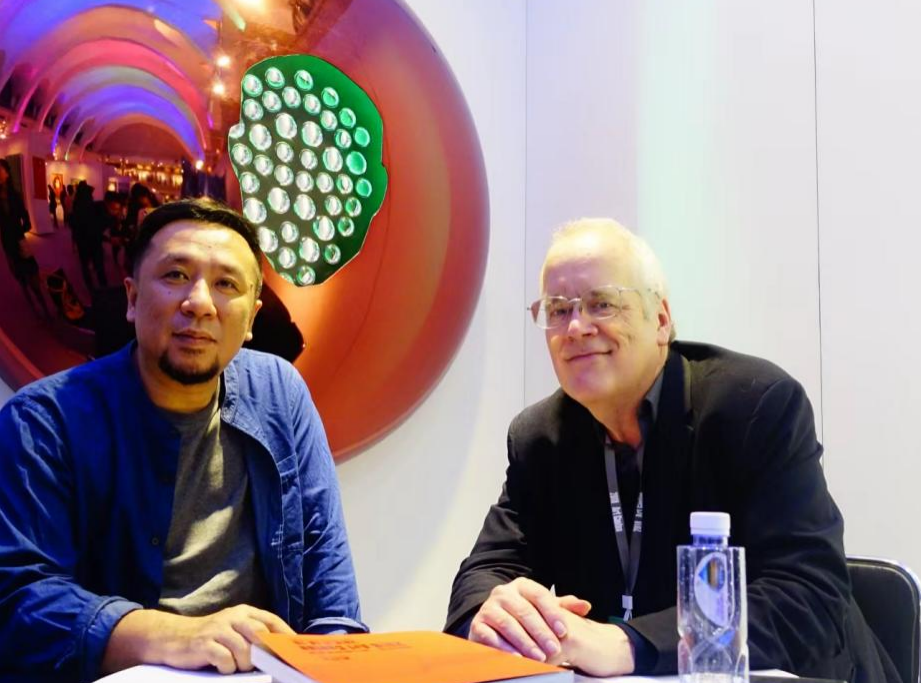
(右:作者大卫·布鲁贝克,湖北大学教授,著名中国文化学者
左:陈昭,GOGAR创始人,艺术家)
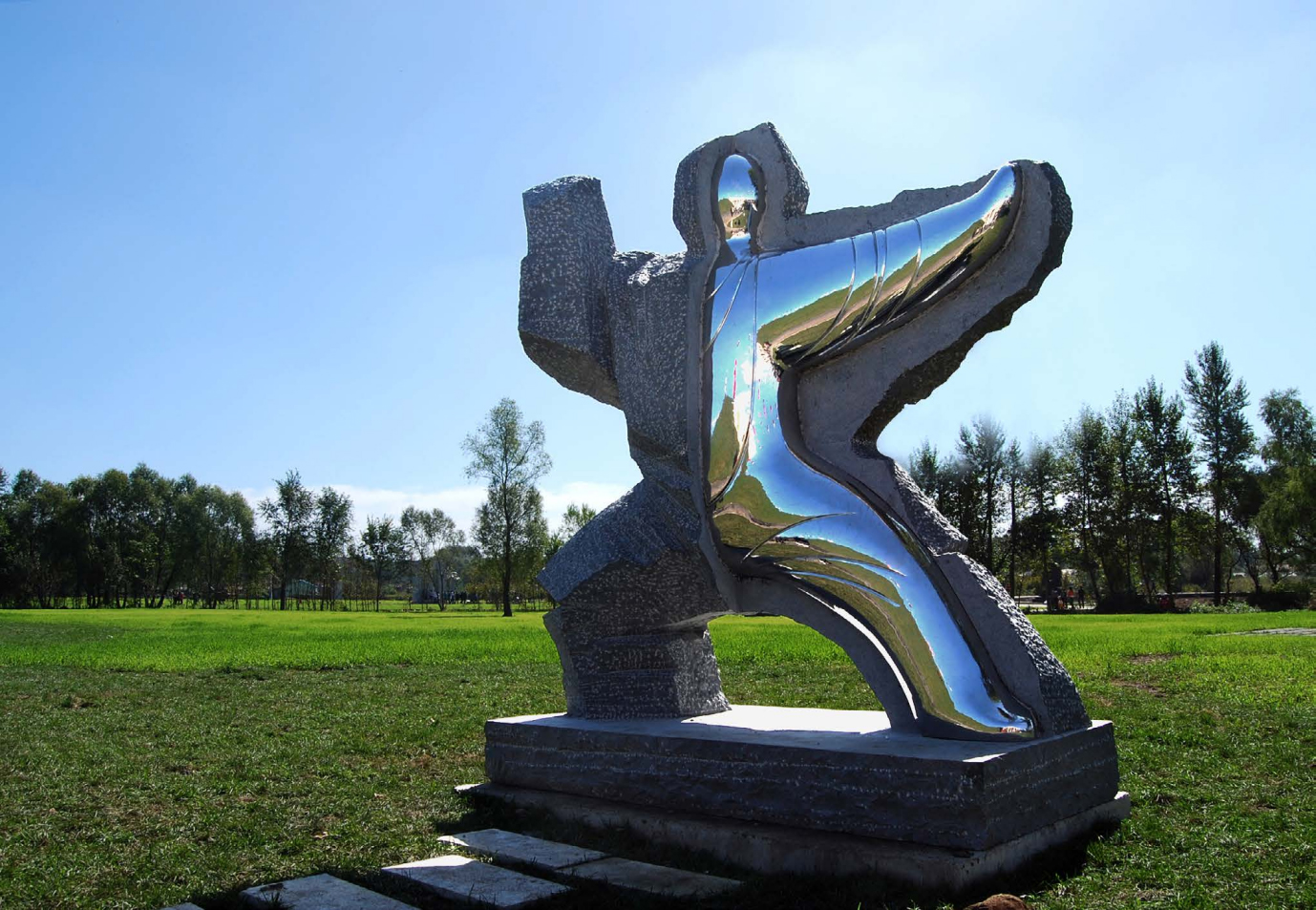
《Tai Chi太极I,2007》
实景拍摄
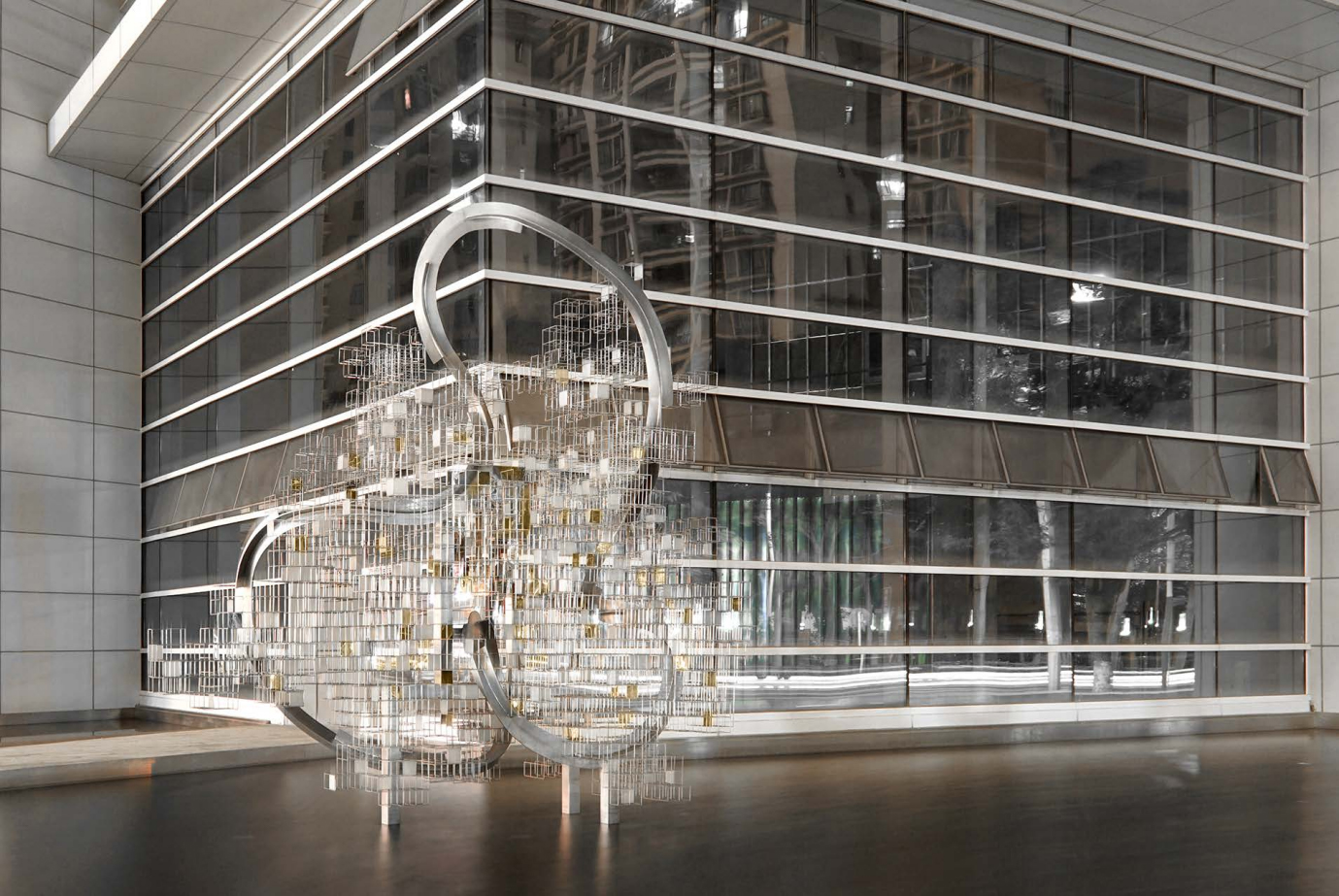
《The Heart of the City城市之心,2013》
实景拍摄
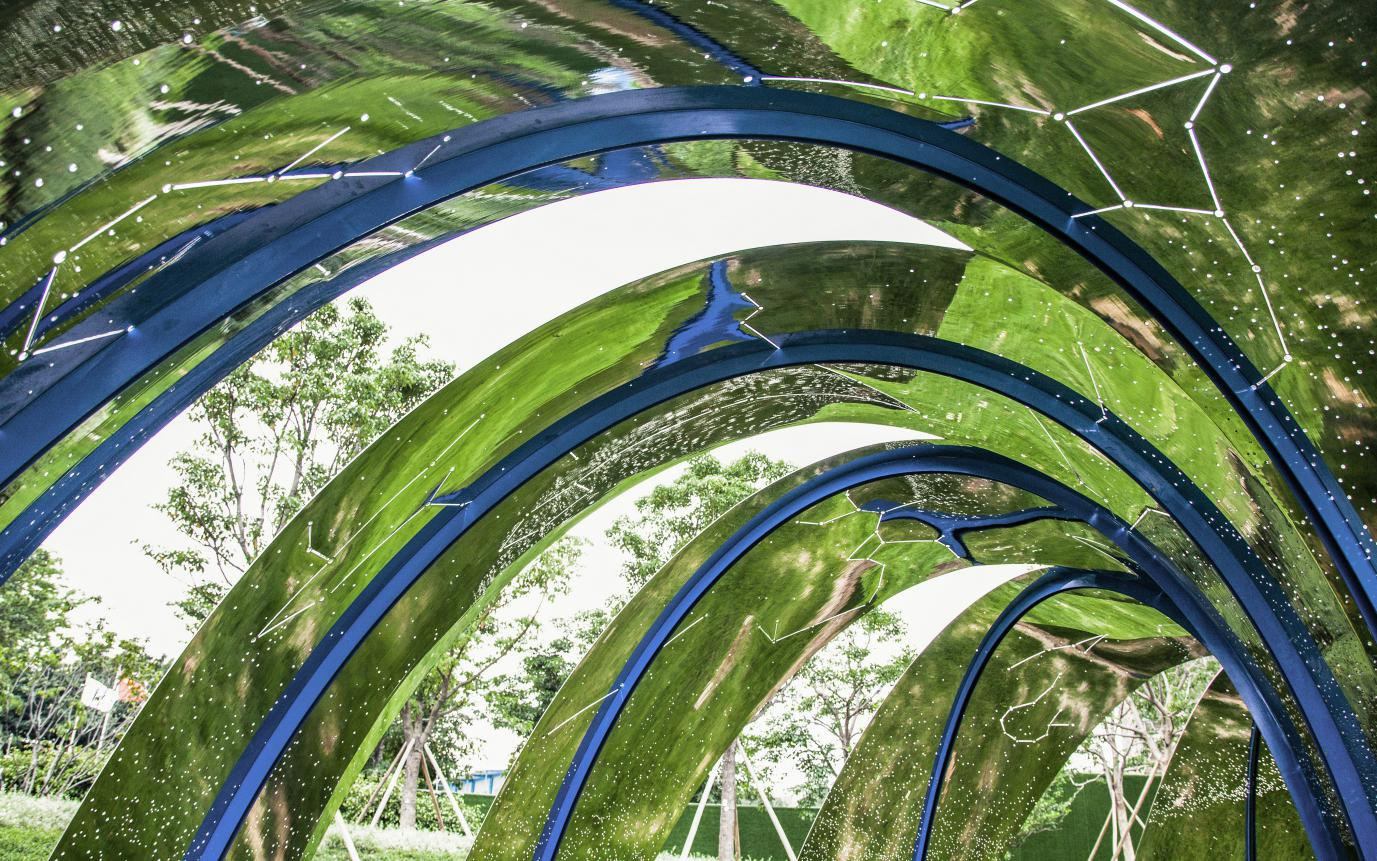
《Feast of Starlight繁星如梦,2019》
实景拍摄
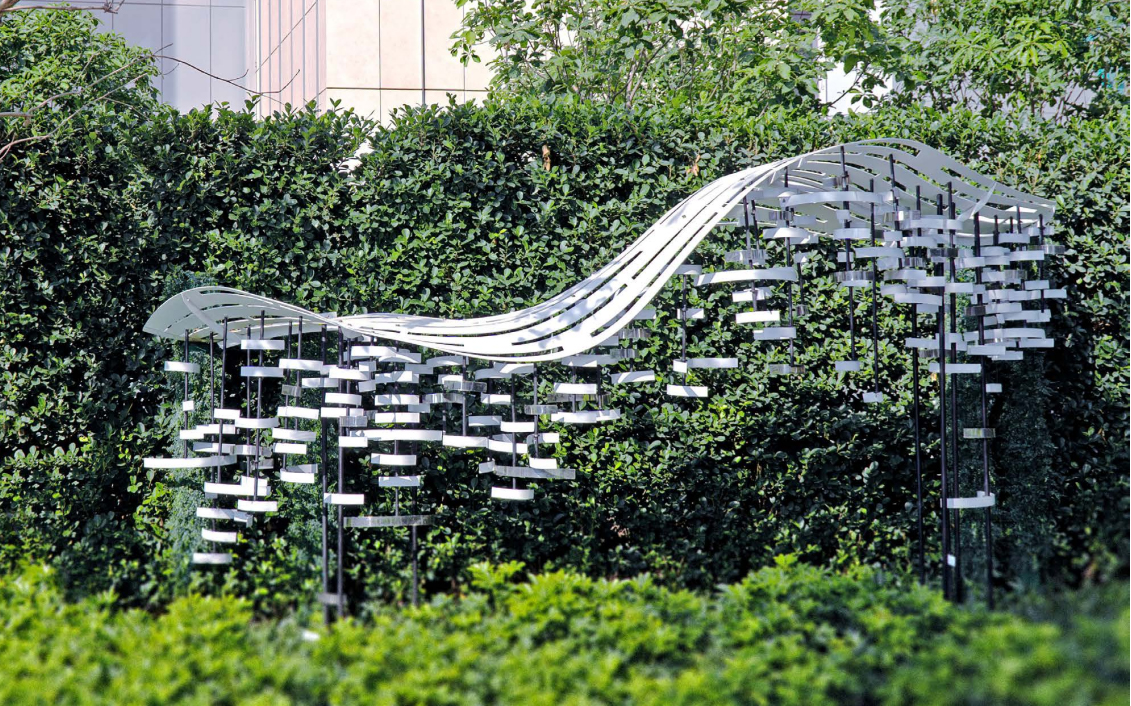
《Mountain Cloud山云雾,2019》
实景拍摄
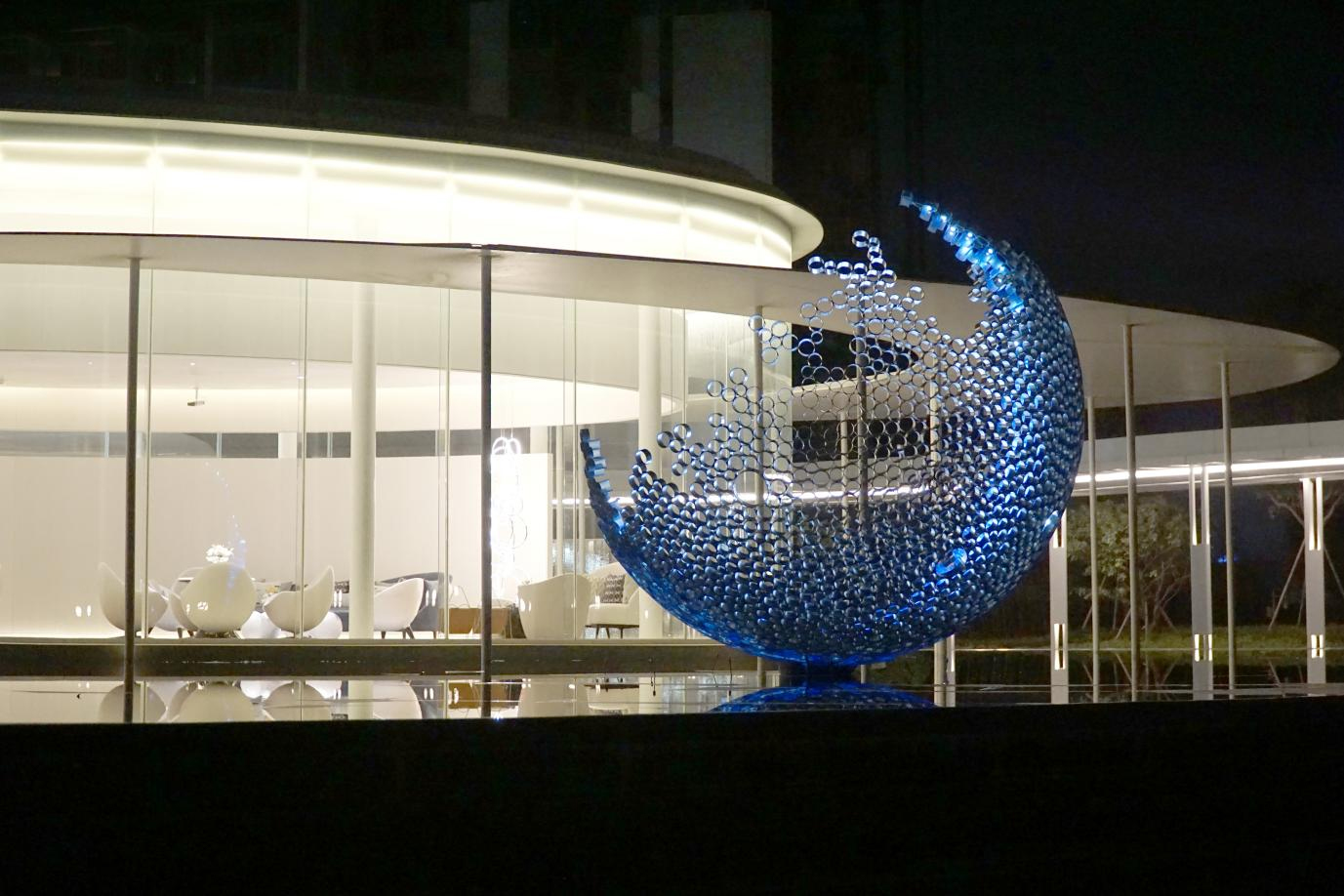
《The Shape of the Moon塑月,2019》
实景拍摄

《shadow horse影马》
实景拍摄
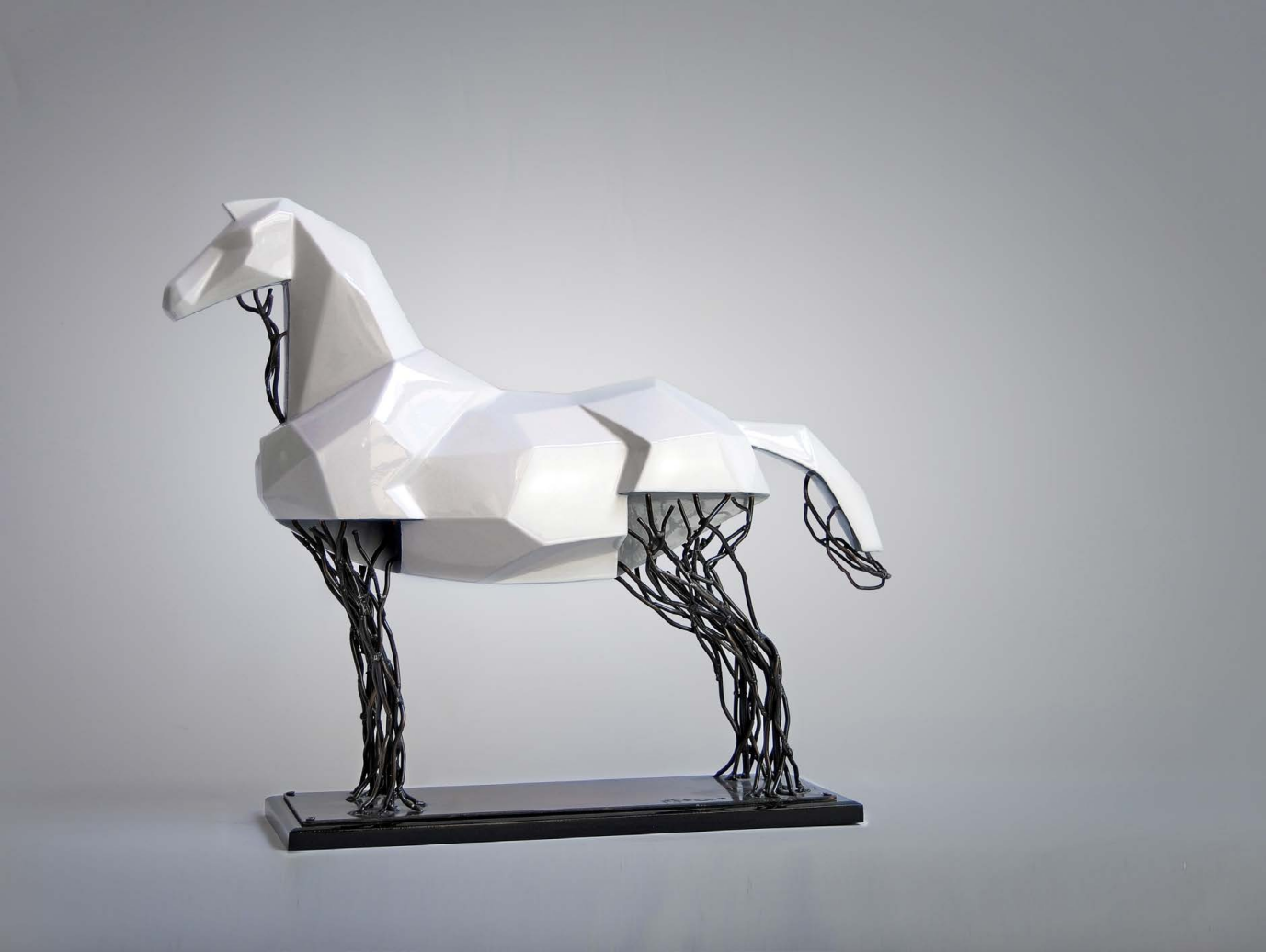
《Horse马》
实景拍摄
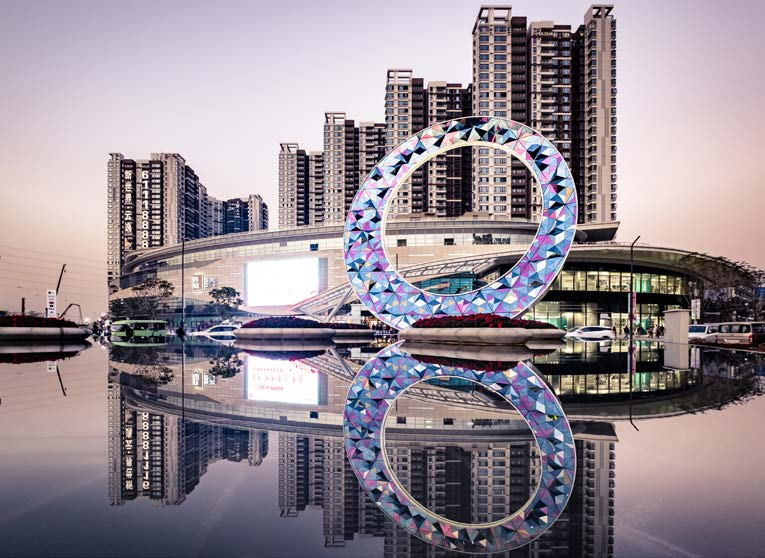
《Insight慧眼》
实景拍摄
GOGAR: City life and the Vitality of Space
What counts as successful design in city life where commerce joins ecological concern? Some theorists emphasize the side of production: designers succeed when they create material conditions so that people acquire moods or feelings of being in the presence of nature. But is good design nothing more than staging conditions that put people into a mood? Can contemporary designs also help each person to appreciate one’s own original place in nature and natural environments? The GOGAR art consulting agency led by Chen Zhao, Carol Liang, Wen Wu, and Brody Wang has always adhered to the design concept of "structural abstractionism". They explore and refine the form and value of things themselves, as well as the objective logic they construct in the "field" (physical concept), to break and rebalance these relationships.
Chen Zhao and his colleagues at Gogar Art Consultancy create designs with the quality of profound artworks, because they enliven public spaces, bring people together, and help each person to affirm personal participation in city life.
The works help each viewer to realize that nature is not given only as a feeling, but also as the presence of an actual appearance that words for physical conditions never quite describe.
There is a profound, philosophical charm in designs that enable a person to realize that the physical and ecological space of a natural environment is inseparable from the visible space that is uniquely one’s own. This is the achievement in such works as Tai Chi I (2007), The Heart of the City (2013), Feast of Starlight (2019), Mountain Cloud (2019), and The Shape of the Moon (2019). These are installations in natural environments. Yet they present spaces, textures and mirror-reflections in ways that enable each individual person to observe that the appearance of real things overlaps with the personal display of one’s own sense of sight.
Designs at Gogar help each person to self-sense a harmony of natural environment with one’s own existence. How does the Tai Chi series do this? Consider Tai Chi I, a sculptural design in stone and stainless steel in the form of a human figure in the middle of actual practice. On the left side, there is stone from the earth: the work suggests a material body that can be observed by others from the outside; on the right, the exterior surface of stone is cut away in order to reveal an interior display of stainless steel that reflects an image of the whole of the surrounding natural environment. The suggestion is that movements of one’s own physical body always have an internal counterpart: a personally-possessed visible surface in the sense of sight that is an internal dimension of naturalness. The use of stainless steel implies a visible surface within which the images of all surrounding things appear. In this design, the individual human being is thought of in two ways: first, as a material object observed from the outside; second, as the possessor of a lively interior display that can be observed or self-sensed only by the individual.The joining of a display of space that is internal to oneself with a space of physical action is also conveyed in the sculpture Tai Chi III, which presents an interior hollow on the left and the extension of limbs on the right.
How then is Tai Chi I related to The Heart of the City? The theme is once again the display of two different spaces: one is external and physical, and the other visible and internal. The difference is that the second design helps the individual beholder to notice that physical space overlaps with the visible space that is uniquely one’s own. At first, a city-dweller approaches and perceives The Heart of the City as a material object; it is a cluster of cube-like shapes in a definite structure near the doorway of a nearby building. But in walking towards the site of this installation, you begin to look at the design in a new way: you notice that the cubes appear to emerge from a surrounding, formless visible space. This formless visible space is observable directly by you, just as the interior visible surface (in stainless steel) is observable only within the eyes of the human figure symbolized in Tai Chi I. So, when you look at The Heart of the City, you see urban architecture in the context of your own visible display. The design reaffirms the scale of the individual person even in the midst of high-rise buildings and commercial activity.
When asked, the individual beholder who engages with The Heart of the City is likely to report a feeling of intimate connection with the space of the installation. Yet, many people may have difficulty finding words that can describe the visible origin of the feeling of connection with natural surroundings. This difficulty is to be expected. The formless, visible space – out of which the cubes appear to emerge – is in one’s own eyes; it cannot be experienced as an external object or described in conventional languages for natural things. The theme of awakening to hollows of visible space displayed right in your own two eyes also occurs in the elegant Shadow Horse (2012), where the shapes of the physical surface of the horse float within the vitality of visible space that reaches into the interior of the sculpture and straight through to the trees behind. By comparison, Horse (2012) is an exploration of abstraction; the exterior of the horse in this case is treated as a geometric solid, while the interior plays up physical structure and plays down visible space as an elemental hollow.
This strategy for providing intimate connection with nature is developed and refined even further in Feast of Starlight (2019), which is constructed by joining together five stainless steel pieces of vaulting. On one side, the pieces join to create a smooth uniform surface that reflects sky and grass. In back, they spread apart so that the surrounding natural environment peeks through four times. There is a smooth reflective surface of stainless steel as in the case of Tai Chi I; and this suggests that the visible surface of the stainless steel can be interpreted once again as a symbol for direct acquaintance with the display in one’s own eyes. But Feast of Starlight also differs from The Heart of the City, because a design sets up a comparison b etween the stainless steel surfaces and the actual appearance of the natural environment behind. As a result, the beholder is invited to construct an analogy: the reflections in the visible surface of the stainless steel are not identical with the natural environment that appears at a distance behind the installation. So, too, the visible surface that appears within your own two eyes is not identical to your experiences of physical things in a natural environment. In addition, with LED lighting, this installation suggests starlight from the cosmos. Ultimately, Feast of Starlight expresses three different ways of thinking about nature: one’s own self-nature that includes a visible realm; the natural environment of physical things; and the universe. Thus, this is an engaging artwork that also expresses a philosophy for the appreciation of nature.
This unification of different dimensions of nature is also suggested in other works. Mountain Cloud is designed so that the line representing mountain tops dissolves into the appearance of the surrounding visible space which is immediately present for the human observer. This artwork represents an alteration in the human viewer’s awareness of what nature actually is: there is the ordinary experience of perceiving nature as mountain at a physical distance; and then there is the naturalness of the visible context of personal observation that is not a mountain. Similarly, in The Shape of the Moon, the moon is half constructed within a formless space that suggests the visible display in one’s own eyes; at the same time, this space contains the image of real architectural buildings in the distance.
Is this approach to design at Gogar transferable to even larger structures? The large-scale work Insight (2018), a LOOP Design Awards winner in 2023, suggests that this is achievable. The colorful pieces of triangular metal form an eye that brings a vitality to the visible space, and this is then doubled in a reflection within water below.The careful attention to color and pattern in this structure ensures that it echoes the geometric features of the surrounding neighborhood of residential high-rise buildings. So the skills manifested in The Heart of the City are amplified. Once again the designers at Gogar apply their ecological awareness so that a viewer’s direct connection with color and space is integrated with the real physical environments of city life. The beauty here is not just in the colored shapes; it is in observing that the shapes occur within the visible space that affirms the city-dweller’s own place in nature. We can look forward to further experiments like this by the design team at Gogar as they continue to enliven the spaces of city life.
By David Brubaker
( Professor of Hubei University , Famous Chinese cultural scholars )


